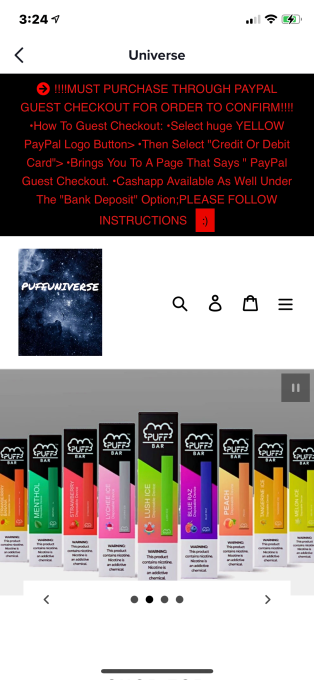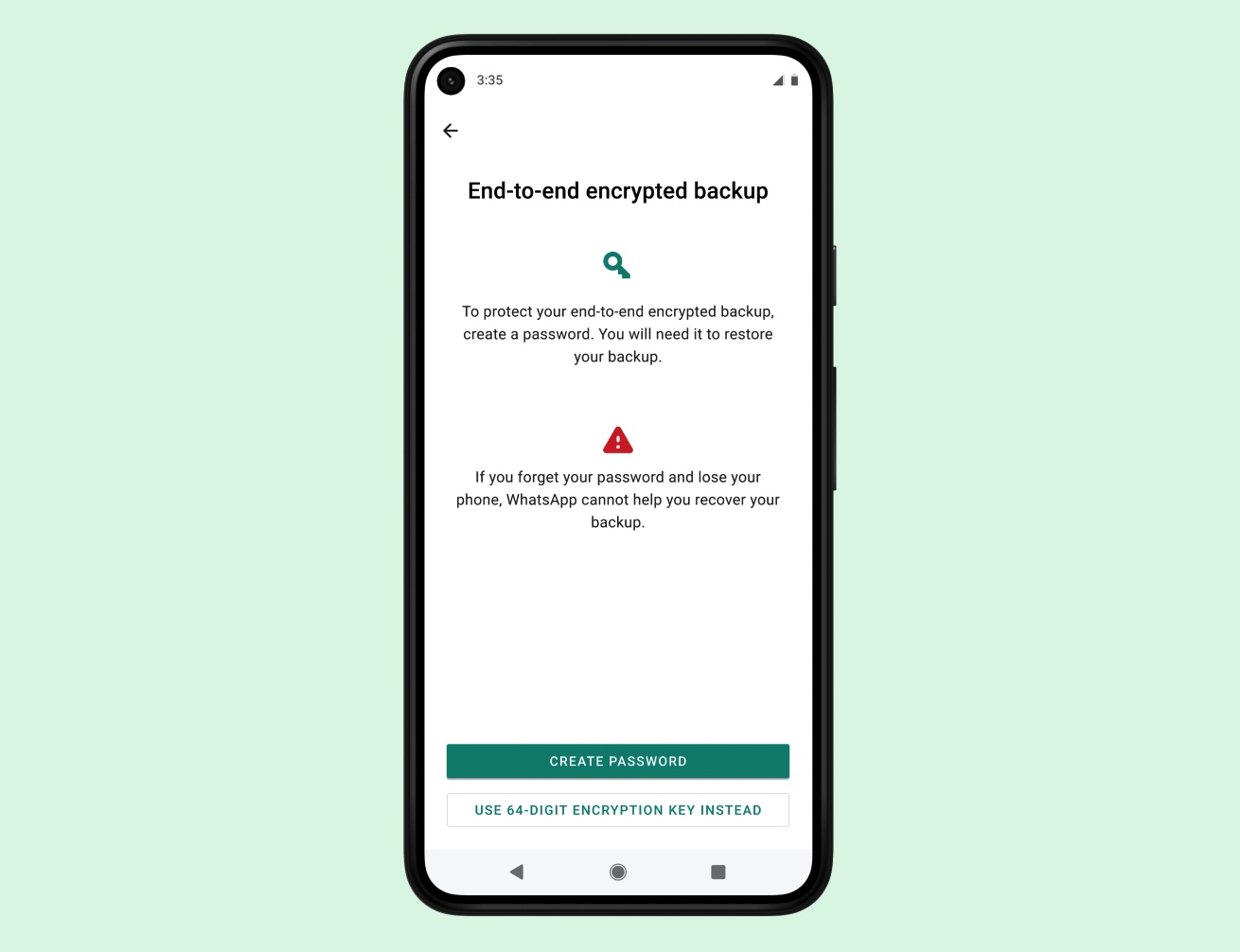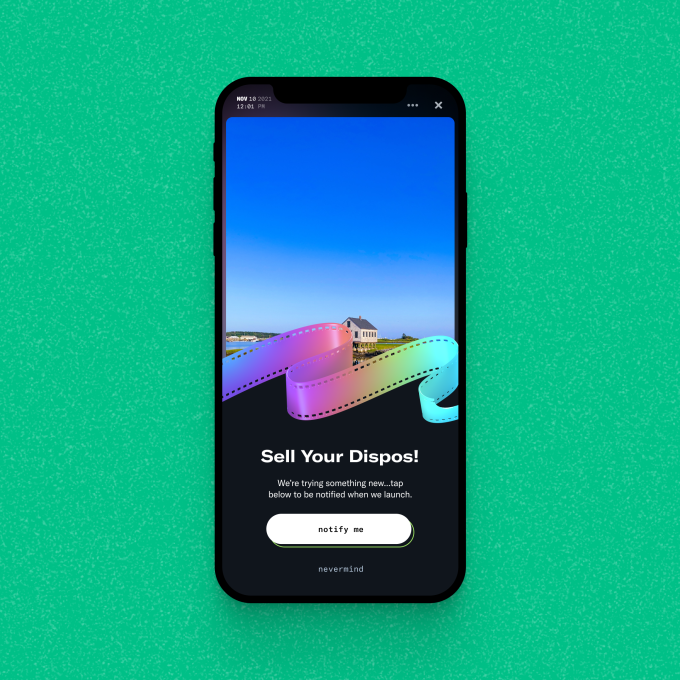APPS
TikTok is being used by vape sellers marketing to teens

TikTok has a vaping problem. Although a 2019 U.S. law made it illegal to sell or market e-cigarettes to anyone under the age of 21, TikTok videos featuring top brands of disposable e-cigarettes and vapes for sale have been relatively easy to find on the app. These videos, set to popular and upbeat music, clearly target a teenage customer base with offers of now-unauthorized cartridge flavors like fruit and mint in the form of a disposable vape. Some sellers even promote their “discreet” packaging services, where the vapes they ship to customers can be hidden from parents’ prying eyes by being placed under the package’s stuffing or tucked inside other products, like makeup bags or fuzzy slippers.
Interest in flavored, disposable vapes that appeal to teens and young adults, in particular, has been growing in the wake of the FDA’s Juul crackdown.
In February 2020, the FDA first began to take enforcement action against illegally marketed e-cigarette devices, including those offering flavors besides tobacco or menthol, as well as those targeted towards minors — an action that was designed to target Juul.
As a result, disposable vapes like Puff Bar were adopted by some young people who were still in search of flavors like bubblegum, peach, strawberry and others. These cheaper disposables were easy to find, and continued to be available at convenience stores and gas stations.
But they’re also all over TikTok, ready to be shipped with anyone with a way to pay.
What’s more, when this content is reported to TikTok, it’s not always taken down.
TechCrunch found vape sellers marketing on TikTok who have been using the app to communicate with customers through both videos and comments. They also direct viewers to what appear to be illegally operating websites. Their TikTok videos often show off the seller’s current inventory of vapes, including disposables like Puff Bar in teen-friendly flavors.
Essentially, the sellers are using TikTok as a way to create vape advertisements they don’t have to pay for that are capable of reaching young consumers — an audience whose interest in vaping hasn’t necessarily declined because of the FDA’s action.
According to nonprofit tobacco control organization Truth Initiative’s latest study, use of Juul decreased between 2019 and 2020, but it remains the most popular e-cigarette brand among 10th and 12th graders who were current vapers at 41%. The report also found that disposable products such as Puff Bar (8%) and Smok (13.1%) have gained during this time.
“Taken together, the 2020 National Youth Tobacco Survey (NYTS) and the new e-cigarette sales data report illustrate how the current federal policy enabled youth to quickly migrate to menthol e-cigarettes (especially Juul menthol pods) when mint-flavored products were removed from the marketplace, and for inexpensive, flavored disposable e-cigarettes such as Puff Bar to soar in popularity,” Truth stated in September 2020.
“With kid magnet names like cotton candy and banana ice, the market share of disposable products nearly doubled in just 10 months from August 2019 to May 2020,” it said.
The scale of the problem on TikTok is also significant.
Today, U.S. teens account for an estimated 32.5% of TikTok’s U.S. active users, according to third-party estimates published by Statista. The company has around 100 million monthly active users in the U.S., it said last year.
Meanwhile, videos tagged with popular vape and e-cigarette brands and keywords have racked up hundreds of millions of views.
For example, the hashtag for leading vape brand Juul (#juul) has 623.9 million views on TikTok, as of the time of writing.
Puff Bar, the maker of a single-use vaping product with Chinese origins, has 449.8 million views for the hashtag #puffbar. Other brands have some traction, as well. #NJOY has 55.3 million views, #smok has 40.1 million views, and British Tobacco’s #Vuse has 5 million views.
These are just the views associated with the hashtag itself. For every search, there are multiple variations. For instance, #puffbars, #puffbarplus and #puffbardealer have 66.8 million views, 9.6 million views and 8.9 million views, respectively. Tags like #juulgang (590.4 million views) have become popular enough that anti-vaping content creators have adopted them as a means of counter-programming against vaping content.
These trends are particularly concerning given the large, young demographic that uses TikTok. A third of its U.S. users may be 14 or under, in fact.
In the U.S. App Store, TikTok is rated for ages 12 and up and on Google Play, its content rating is “Teen.” But while TikTok has modified the default privacy settings for young people’s accounts and has been quick to block other controversial hashtags in the past (like those around U.S. election conspiracies), it has allowed vaping-related content to remain easy to find.
In addition to the popular vaping hashtags prevalent on TikTok, we uncovered numerous vape sellers operating under obvious account names such as “@puffsonthelow,” “@PuffUniverse” and “@Puffbarcafe,” for example. Their pages were filled with vape videos boldly marketing their current selections, hashtagged with vape-related terms like #puffbarchallenge, #puffplus, #vapetricks and others.
In some cases, we found vape sellers had even tagged their videos with #kids and other trending tags.
Knowing that their target market is often teenage vapers, many videos depicted how the seller could package the vape inside another product or hide it in the stuffing so parents wouldn’t find out. We saw videos of vapes packaged underneath candy, inside makeup bags, inside socks, underneath other lager products, and more.
Through links published to the account’s profile or referenced in the videos, TikTok users are redirected to the sellers’ websites or even Discord channels where they would only sometimes be presented with an age verification pop-up.
Often, they could just add items to a basket and check out. Many sellers also directed their customers to pay using PayPal, Venmo and/or Cash App, instead of accepting standard credit card payments.

None of this is legal, according to the Campaign for Tobacco Free Kids, a leading American nonprofit focused on reducing tobacco consumption, particularly among youth.
“It’s illegal to market these products or to engage in marketing that appeals directly to anybody under the age of 21,” Matt Myers, the president of the Campaign for Tobacco Free Kids, told TechCrunch. “And it’s illegal to actually conduct a sales transaction without age verification.”

Image Credits: TikTok screenshot
Plus, he adds, clicking a box on a website that says “I’m over 21,” does not qualify as a legal age verification for making these sales.
The FDA hasn’t issued specific guidance around online retail, but the law is clear that checking IDs is required to ensure retailers aren’t selling to underage users. That’s not happening with a pop-up box, and often there’s no box at all.
In addition, the FDA reminded TechCrunch that Congress recently established new limits on the mailing and delivery of e-cigarettes and other tobacco products through the United States Postal Service and through other carriers, which should limit access to these sorts of products through online retail purchases.
Myers, however, points out that the current FDA guidelines have made enforcement of this sort of “social” vape marketing more difficult than necessary.
“The images you’re seeing, the use of influencers, and the kinds of offers you’re seeing are governed by a federal standard by the FDA, which is very broad and very general,” Myers says. “The FDA’s failure to articulate clear, specific guidelines means that everyone is in a constant what I call ‘whack-a-mole.’”
Enforcement, then, often depends on the FDA stepping in, which Myers says happens “on a very sporadic basis.”
“In many respects, the behaviors, the actions and the things you’re seeing do violate the law. But the mechanisms for implementing it that were put in place under this past administration are woefully weak and inadequate,” he says.

Image Credits: screenshots of TikTok
Another complicating factor is that public health groups — like the Campaign for Tobacco Free Kids, for instance — don’t have a relationship with TikTok, as they do with other social networks.
Over the last couple of years, over 100 public health groups came together to ask leading social networks like Facebook, Instagram, Twitter and Snapchat to clamp down on tobacco-related content and the use of influencers in marketing. As a result of these efforts, Facebook and Instagram implemented new rules to prohibit social media influencers from promoting tobacco-related products and developed algorithms to pick up on that sort of content.
Overall, the health organizations have reported seeing a reduction in tobacco and vape content on top social platforms, but these efforts have not yet included TikTok.
The Campaign for Tobacco Free Kids has not given TikTok a comprehensive review, Myers admits, due to the app still being relatively new. But from what the organization has seen so far, TikTok is of growing concern.
“We’ve seen some of the most egregious marketing, use of influencers, direct offers of sale to young people [which] appear to be gravitating over to TikTok,” Myers says. “And we don’t see any evidence that TikTok has actually done anything.”
TikTok can’t claim ignorance of the problem, either.

Image Credits: TikTok screenshot
When a vape seller who unabashedly advertised “no ID check” was reported to TikTok through its built-in reporting mechanism, TikTok’s content moderation team said the content didn’t violate its guidelines. This same response was given when other vape sellers were reported, as well. (See below.)
TikTok claims this shouldn’t be happening. The company told us that it will remove accounts dedicated to posting vaping or e-cigarette content as soon as it becomes aware of them, and will reset account bios that link to off-platform tobacco or vaping sites.
It also says its Community Guidelines prohibit content that suggests, depicts, imitates, or promotes the possession or consumption of tobacco by a minor, and content that offers instruction targeting minors on how to buy, sell, or trade tobacco. And it doesn’t permit tobacco ads.

Image Credits: screenshots of TikTok reports
Reached for comment over whether it was aware of the problems on TikTok, an FDA spokesperson said it does not discuss specific compliance and enforcement activities.
However, the spokesperson said the agency will closely monitor retailer, manufacturer, importer, and distributor compliance with federal tobacco laws and regulations and take corrective action when violations occur. In addition, the FDA said it conducts routine monitoring and surveillance of tobacco labeling, advertising and other promotional activities, including activities on the internet.
What’s been making matters more confusing is that the FDA has been accepting premarket applications for flavored vape devices, but has so far refused to list which companies — Puff Bar or otherwise — may have filed for these. That means health organizations don’t know which products the FDA has under review.
But the Agency told TechCrunch that regardless of whether a premarket application has been submitted, it’s enforcing lack of marketing authorization for any product where the manufacturer “is not taking adequate measures to prevent youth access to these products.”
That statement would then include these online Puff Bar retailers and their TikTok marketing efforts.
The FDA added that it has taken action against Puff Bar, specifically, in recent days.
It sent a warning letter to Cool Clouds Distribution, Inc. d/b/a Puff Bar, last July, notifying the company that it was marketing new tobacco products that lacked marketing authorization and that such products, as a result, were adulterated and misbranded.
Earlier this month, as part of an ongoing joint operation with the FDA, U.S. Customs and Border Protection seized 33,681 units of e-cigarettes, which included disposable flavored e-cigarette cartridges resembling the Puff Bar brand, including Puff XXL and Puff Flow, we’re told.
TikTok confirmed the activity we’re documenting is in violation of its guidelines and policies, but could not explain why there’s been such a disconnect between that policy and its enforcement actions.
“We are committed to the safety and well-being of our TikTok community, and we strictly prohibit content that depicts or promotes the possession or consumption of tobacco and drugs by minors,” a TikTok spokesperson told TechCrunch. “We will remove accounts that are identified as being dedicated to promoting vaping, and we do not allow ads for vaping products.”
APPS
Best ASO Tips To Boost Your App Search In 2022

You need your application to be really effective in the overpopulated application market. Then, at that point, you will have to drive downloads to endure. So when it’s all said and done, you must account for yourself. Get your application the consideration it merits.
The uplifting news, however, is that customers love to download applications – last year, we downloaded in excess of 200 billion applications around the world, and that figure is set to increment to 258 billion every year by 2022 as cell phone reception increments.
Assuming you need to be seen and have your application downloaded by however many clients as could reasonably be expected, then, at that point, you should begin by taking a gander at the application store.
Underneath, we’ve assembled probably the best application store improvement methods to assist you with creating more downloads in 2021 and then some…
Start with Your Application Name
The odds are you as of now have an extraordinary name for your application, yet an appropriately advanced application is about significantly more than marking.
Assuming you need to amplify transparency and guarantee you’re showing up when clients look for applications like yours, you ought to remember the primary keywords for your application name or title, comparable to how you’d make a title label while improving a site page.
You could begin with your application name so it tends to be plainly recognized, thus it appears on the home screen of gadgets.
Then, at that point, you can add a scramble or vertical bar prior to adding a few pertinent watchwords to your speciality, or even put your application name in quotes as we did with FORE Business Golf Networking.
Urge Users to Leave Reviews
You could ask for reviews by clients through the means of your site, or through an in-application notice toward the finish of their meeting, yet make sure to restrict the number of pop-ups you execute with the goal that you don’t disturb or disappoint your clients, as this could urge them to erase your application.
We’d support all application engineers and entrepreneurs to react to criticism on their applications, as this can further develop client relations and resolve issues in an open arena.
Zero in on Your Application Depiction
Your application depiction is your principle assemblage of text your landing page content, in a manner of speaking. Utilize a site like KeywordTool.io to discover information on your picked catchphrases to expand your openness. As portrayals are shortened, ensure you remember the main data for the initial three lines of your depiction, and afterwards add things like social confirmation, emoticon, and suggestions to take action to build commitment and downloads.
Incorporate Appealings Screen Captures
Pictures and recordings won’t help your application rank, yet they will expand changes and assist clients with working out whether it’s an application they truly need.
There’s a little guide in empowering clients toward downloading your application if in any case, they’re not going to interface with it, or download and leave a negative survey when they understand it wasn’t what was promoted.
Assuming you need to ‘tart up’ your item page, then, at that point, you can add marking and extra text and data and designs to your recordings and screen capture, yet they ought not to diminish your item.
Pay for App Store or Play Store
As we have SEO and pay-per-click, you need to work one next to the other (one is a gradual methodology with long haul benefits – the other is a speedy success yet requires an endless spending plan), application store promotions can be utilized to get the message out with regards to your new programming and assist you with positioning at the highest point of query items pages – in front of your opposition and enormous names in the application world.
Keep in mind, you’ll need to focus on the right crowd and art an advertisement that will assist you with changing over and that since you’re paying for situations, that doesn’t mean clients will download or cooperate with your application.
Wrapping Up!
You can employ a group of App Store Optimization Services suppliers to benefit a scope of application store improvement administrations, including watchword advancement, resource enhancement, and restriction to guarantee your application is seen by individuals that matter.
We have long periods of involvement in creating and showcasing applications and have assisted different customers with expanding their downloads by infiltrating rewarding and regularly undiscovered business sectors.
Author:
Prachi Gupta likes to write information about Digital Marketing Trends that can help audience to grow their business.
APPS
WhatsApp will finally let users encrypt their chat backups in the cloud

WhatsApp said on Friday it will give its two billion users the option to encrypt their chat backups to the cloud, taking a significant step to put a lid on one of the tricky ways private communication between individuals on the app can be compromised.
The Facebook-owned service has end-to-end encrypted chats between users for more than a decade. But users have had no option but to store their chat backup to their cloud — iCloud on iPhones and Google Drive on Android — in an unencrypted format.
Tapping these unencrypted WhatsApp chat backups on Google and Apple servers is one of the widely known ways law enforcement agencies across the globe have for years been able to access WhatsApp chats of suspect individuals.
Now WhatsApp says it is patching this weak link in the system.
“WhatsApp is the first global messaging service at this scale to offer end-to-end encrypted messaging and backups, and getting there was a really hard technical challenge that required an entirely new framework for key storage and cloud storage across operating systems,” said Facebook’s chief executive Mark Zuckerberg in a post announcing the new feature.
Store your own encryption keys
The company said it has devised a system to enable WhatsApp users on Android and iOS to lock their chat backups with encryption keys. WhatsApp says it will offer users two ways to encrypt their cloud backups, and the feature is optional.
In the “coming weeks,” users on WhatsApp will see an option to generate a 64-digit encryption key to lock their chat backups in the cloud. Users can store the encryption key offline or in a password manager of their choice, or they can create a password that backs up their encryption key in a cloud-based “backup key vault” that WhatsApp has developed. The cloud-stored encryption key can’t be used without the user’s password, which isn’t known by WhatsApp.

Image Credits: WhatsApp/supplied
“We know that some will prefer the 64-digit encryption key whereas others want something they can easily remember, so we will be including both options. Once a user sets their backup password, it is not known to us. They can reset it on their original device if they forget it,” WhatsApp said.
“For the 64-digit key, we will notify users multiple times when they sign up for end-to-end encrypted backups that if they lose their 64-digit key, we will not be able to restore their backup and that they should write it down. Before the setup is complete, we’ll ask users to affirm that they’ve saved their password or 64-digit encryption key.”
A WhatsApp spokesperson told TechCrunch that once an encrypted backup is created, previous copies of the backup will be deleted. “This will happen automatically and there is no action that a user will need to take,” the spokesperson added.
Potential regulatory pushback?
The move to introduce this added layer of privacy is significant and one that could have far-reaching implications.
End-to-end encryption remains a thorny topic of discussion as governments continue to lobby for backdoors. Apple was reportedly pressured to not add encryption to iCloud Backups after the FBI complained, and while Google has offered users the ability to encrypt their data stored in Google Drive, the company allegedly didn’t tell governments before it rolled out the feature.
When asked by TechCrunch whether WhatsApp, or its parent firm Facebook, had consulted with government bodies — or if it had received their support — during the development process of this feature, the company declined to discuss any such conversations.
“People’s messages are deeply personal and as we live more of our lives online, we believe companies should enhance the security they provide their users. By releasing this feature, we are providing our users with the option to add this additional layer of security for their backups if they’d like to, and we’re excited to give our users a meaningful advancement in the safety of their personal messages,” the company told TechCrunch.
WhatsApp also confirmed that it will be rolling out this optional feature in every market where its app is operational. It’s not uncommon for companies to withhold privacy features for legal and regulatory reasons. Apple’s upcoming encrypted browsing feature, for instance, won’t be made available to users in certain authoritarian regimes, such as China, Belarus, Egypt, Kazakhstan, Saudi Arabia, Turkmenistan, Uganda and the Philippines.
At any rate, Friday’s announcement comes days after ProPublica reported that private end-to-end encrypted conversations between two users can be read by human contractors when messages are reported by users.
“Making backups fully encrypted is really hard and it’s particularly hard to make it reliable and simple enough for people to use. No other messaging service at this scale has done this and provided this level of security for people’s messages,” Uzma Barlaskar, product lead for privacy at WhatsApp, told TechCrunch.
“We’ve been working on this problem for many years, and to build this, we had to develop an entirely new framework for key storage and cloud storage that can be used across the world’s largest operating systems and that took time.”
APPS
Dispo launches a test to gauge user interest in selling their photos as NFTs

Dispo, the photo-sharing app that emulates disposable cameras, started rolling out a test yesterday that will record user interest in selling photos as NFTs. Some users will now see a sell button on their photos, and when they tap it, they can sign up to be notified when the ability to sell Dispo photos launches.
CEO and co-founder Daniel Liss told TechCrunch that Dispo is still deciding how it will incorporate NFT sales into the app, which is why the platform is piloting a test with its users. Dispo doesn’t know yet what blockchain it would use, if it would partner with an NFT marketplace or what cut of sales Dispo would take.
“I think it’s safe to say from the test that there will be an experience native to the Dispo app,” Liss said. “There are a number of ways it could look — there could be a native experience within Dispo that then connects through an API to another platform, and in turn, they’re our partner, but to the community, it would look native to the Dispo app.”

Image Credits: Dispo
This marks a new direction for the social media app, which seeks to redefine the photo-sharing experience by only letting users see the photos they took at 9 AM the next morning. From Dispo’s perspective, this gimmick helps users share more authentically, since you take one photo and then you’re done — the app isn’t conducive to taking dozens of selfies and posting the “best” image of yourself. But though it only launched in December 2019, Dispo has already faced both buzzy hype and devastating controversy.
Until about a year ago, the app was called David’s Disposables, named after co-founder and YouTuber David Dobrik. The app was downloaded over a million times in the first week after its release and hit No. 1 on the App Store charts. In March 2021, the app dropped its waitlist and relaunched with social network features, but just weeks later, Insider reported sexual assault allegations against a member of Vlog Squad, Dobrik’s YouTube prank ensemble. In response, Spark Capital severed ties with the company, leading to Dobrik’s departure. Other investors like Seven Seven Six and Unshackled Ventures, which contributed to the company’s $20 million Series A round, announced that they would donate any profits from their investments in Dispo to organizations working with survivors of sexual assault.
Liss told TechCrunch in June, when the company confirmed its Series A, that Dobrik’s role with the company was as a marketing partner — Liss has been CEO since the beginning. In light of the controversy, Liss said the app focused on improving the product itself and took a step back from promotion.
According to data from the app analytics firm SensorTower, Dispo has reached an estimated 4.7 million global installs to date since launch. Though the app saw the most downloads in January 2020, when it was installed over 1 million times, the app’s next best month came in March 2021, when it removed its waitlist — that month, about 616,000 people downloaded Dispo. Between March and the end of August, the app was downloaded around 1.4 million times, which is up 118% year over year compared to the same time frame in 2020 — but it should be expected that this year’s numbers would be higher, since last year, the app’s membership was exclusive.

Image Credits: Dispo
Now, with the announcement that Dispo is pursuing NFTs, Liss hopes that his company won’t just change how people post photos, but what the relationship will be between platforms and the content that users create.
“Why NFTs? The most powerful memories of our lives have value. And they have economic value, because we created them, and the past of social media fails to recognize that,” Liss told TechCrunch. “As a result, the only way that a creator with a big following is compensated is by selling directly to a brand, as opposed to profiting from the content itself.”
Adding NFT sales to the app offers Dispo a way to profit from a cut of user sales, but it stands to question how adding NFT sales could impact the community-focused feel of Dispo.
“I think there is tremendous curiosity and interest,” Liss said. “But these problems and questions are why we need more data.”
-

 PPC6 days ago
PPC6 days ago19 Best SEO Tools in 2024 (For Every Use Case)
-

 MARKETING7 days ago
MARKETING7 days agoEcommerce evolution: Blurring the lines between B2B and B2C
-
SEARCHENGINES5 days ago
Daily Search Forum Recap: April 19, 2024
-
SEARCHENGINES6 days ago
Daily Search Forum Recap: April 18, 2024
-

 WORDPRESS6 days ago
WORDPRESS6 days agoHow to Make $5000 of Passive Income Every Month in WordPress
-

 SEO7 days ago
SEO7 days ago2024 WordPress Vulnerability Report Shows Errors Sites Keep Making
-

 WORDPRESS7 days ago
WORDPRESS7 days ago10 Amazing WordPress Design Resouces – WordPress.com News
-

 SEO6 days ago
SEO6 days ago25 WordPress Alternatives Best For SEO















